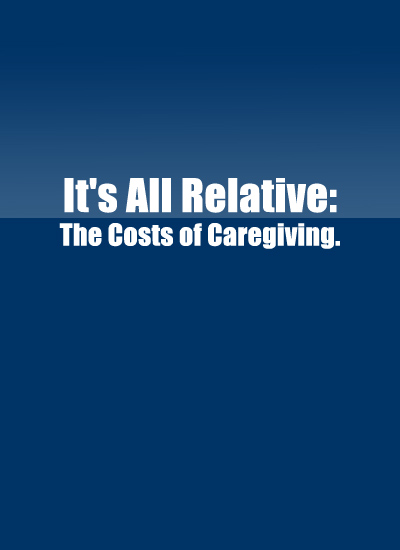
Family.
It’s the most important thing in our lives.
When something happens to someone in the family, everybody wants to help. One day, it might be you who needs that help.
An accident, injury or age may have an impact on your independence. Suddenly life changes, not only for you, but also for those who love you.
As caregivers, family plays an important role in protecting you and ensuring that you are taken care of. Being a caregiver makes your family feel good. It makes them happy. It lets them express their love in a tangible way. �
More than 65 million — 28.5% of the U.S. population — are caregivers to family, friends and children with special needs.1
1 Caregiving in the U.S. 2009, National Alliance for Caregiving in collaboration with AARP. Retrieved on May 2013.�
Answering the Caregiver Call
Caring for someone else, while rewarding, can be overwhelming physically, emotionally and financially.
The demands of running a household can be challenging for a caregiver who has to split their time between family and caregiving responsibilities.
For a caregiver, completing a growing to-do list can be a challenge in itself. �
- Grocery shop
- Housework
- Prepare meals
- Make medical appointments
- Transport to and from appointments�
- Bathing
- Dressing
- Feeding
- Give medicines, pills or injections
- Manage finances�
What do caregivers say is their biggest challenge?
Finding time for themselves, their families and their friends.�
53% of all caregivers say that as a result of caregiving, they have less time for friends or family.2
2 Caregiving in the U.S. 2009, National Alliance for Caregiving in collaboration with AARP. Retrieved on May 2013.�
The Face of a Caregiver
If a long-term care event happens to you, who would step up? Who will do what? Who will pay when you need help?
The answer may surprise you.
Then again, maybe not.
75% of family caregivers are women.3
20 hours per week is the average number of hours family caregivers spend caring for their loved ones, while 13% of family caregivers are providing 40 hours of care a week, or more.4
3 Fact Sheet: Caregiving Issues & Strategies, Family Caregiver Alliance, 2009. Updated: November 2012.
4 Caregiving in the U.S. 2009, National Alliance for Caregiving in collaboration with AARP. Retrieved on May 2013.�
A Work Life Interrupted
If your caregiver is employed, how does caregiving affect their work?
Balancing the demands of a career and caregiving responsibilities may be a lot to manage. Work schedules may have to be adjusted. Promotions may be put on hold. Traveling may be out of the question.
In some cases, the dream of a successful career may even have to be shelved.�
6 in 10 family caregivers are employed.5
66% of caregivers have to adjust their work hours, from going in late to leaving early.6
6% turned down a promotion.6
1 in 5 have had to take a leave of absence.6
5 Fact Sheet: Statistics and Demographics, Family Caregiver Alliance, 2009. Updated: November 2012.
6 Caregiving in the U.S. 2009, National Alliance for Caregiving in collaboration with AARP. Retrieved on May 2013.
Cost of Caregiving
Know, too, that there may be financial impacts to helping provide care. If a caregiver has to leave work, work fewer hours or take a leave of absence to provide care, there might be a loss of household income.
Add to it, increases in expenses for medications, equipment, transportation and other out-of-pocket costs.
Suddenly, there may be money issues in a home where there weren’t any before.
47% of working caregivers say an increase in caregiving expenses has used up ALL or MOST of their savings.7
The average family caregiver for someone 50 years or older spent $5,531 per year on caregiving expenses in 2007.8
7 Evercare Survey of the Economic Downturn and Its Impact on Family Caregiving; National Alliance for Caregiving and Evercare. March 2009. Retrieved May 2013.
8 Valuing the Invaluable: The Economic Value of Family Caregiving, 2008 Update. AARP. Retrieved May 2013.�
Caregiver Health
How does caregiving affect a caregiver’s health?
�20% of employed female caregivers over 50 report symptoms of depression.9
Employees caring for an older relative are more likely to experience depression, diabetes, hypertension or heart disease.10
9 Fact Sheet: Statistics and Demographics, Family Caregiver Alliance, 2009. Updated: November 2012.
10 MetLife Study of Working Caregivers and Employer Health Costs; national Alliance for Caregiving and MetLife Mature Market Institute. February 2010. Retrieved May 2013.�
If family is that important, show it.
Now is the time� to think about how your need for future care might impact you and your family. �


The information on this site does not apply to the following states: FL, GA, KS, LA, MA, MN, NY, VT, VA, WV.


